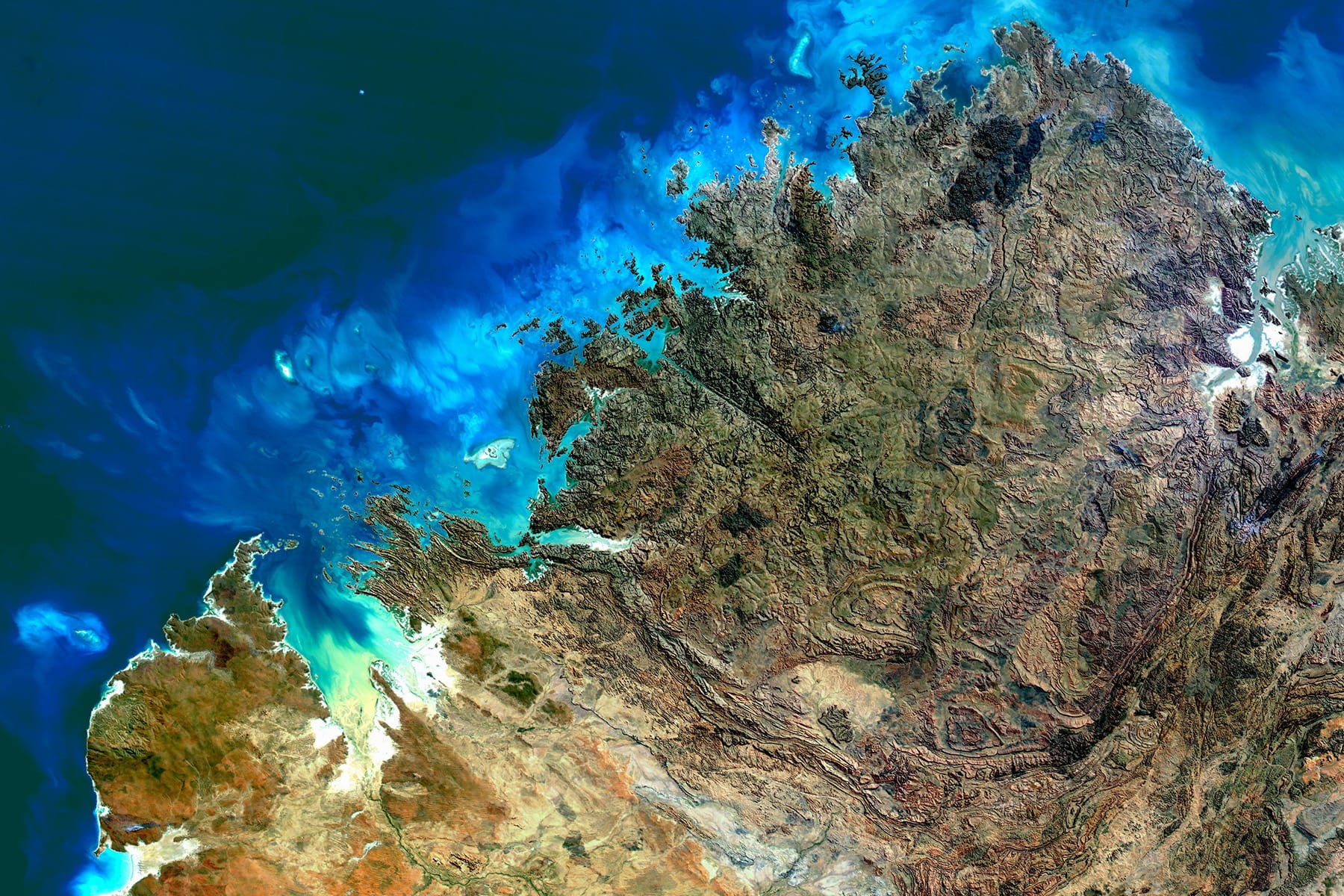Snubfin dolphins call Roebuck Bay home
March 30, 2022


The WAMSI Kimberley Marine Research Program (KMRP) has delivered the science results that give government natural resource managers, Traditional Owners of saltwater country and researchers access to a comprehensive set of new information to monitor and understand changes in the Kimberley’s unique marine environment.
The 23 research projects that make up the KMRP collectively describe the physical and biological environment, ecosystem processes and the social values and uses of this vast wilderness.
The program spanned the 13,500km Kimberley coastline and brought together more than 200 scientists from 25 organisations, including nine WAMSI partner agencies, and representatives from seven saltwater country Traditional Owner communities.
The KMRP was supported by $12 million from the WA government’s Kimberley Science and Conservation Strategy and co-investment by the WAMSI partners and totalled $30 million in combined investment. The program was also supported by the Traditional Owners of the Kimberley.
Regional structure has built much of the landforms and related ecosystem development, and controlled the architecture of the drowned landscapes (during rising sea levels of the last
Benthic primary producers form the basis of the trophic structure that supports the highly diverse Kimberley marine fauna through their productivity and ecosystem services. This
Seagrasses provide numerous ecological functions and services in coastal areas, including fisheries production, sediment stabilisation resulting in coastal protection a
It is recognised that the Kimberley region is a tidally driven system, however there has been insufficient oceanographic and fine resolution bathymetry information to understand and
The biological productivity of the Kimberley coast is thought to be fuelled by a combination of oceanic and terrestrially derived nutrients, but little is known about how these nutrient sources
River mouths and estuaries can be highly productive habitats that support biodiversity and potentially targeted species for commercial, recreational, and cultural purposes.
The Kimberley coast remains a region of inadequate knowledge to understand the status of regional marine turtle stocks that face multiple contemporary pressures such as
Saltwater crocodile populations have been protected in Australia since 1969 when three previous decades of unregulated hunting had driven down numbers across the Kimberley and
Dugongs are an important species in marine ecosystems and have high cultural value to Indigenous coastal communities. The coastal waters of NW Australia is home to on
Humpback whales traverse waters off the coast of Western Australia as they migrate annually from summer feeding grounds in Antarctica to breeding grounds in the nearshore waters of the
The Australian snubfin dolphin and Australian humpback dolphin are poorly-understood species. Here, we investigate the population genetic structure and relative abundance of
Migratory shorebirds are protected by a number of international conservation agreements and are treated as matters of national significance under the EPBC Act 1999. The tidal flats of
This project contributes to the social characterisation research of the Kimberley coastline and marine environment. It goes beyond a focus on people as the cause of
In Australia, coastal and marine environments are highly valued for the range of cultural, traditional, commercial and recreational opportunities they provide.
The Kimberley Indigenous Saltwater Science Project (KISSP) has produced a range of documents that seek to build capacity for collaborative management of Kimberley
Our present understanding of environmental controls on reef productivity is based primarily on studies from reefs of the Caribbean, Hawaii, southern Great Barrier Reef and other Indo-
Researchers collaborated with Bardi Jawi land and sea rangers to develop a detailed understanding of how fish, coral recruitment and herbivory act as key processes tha
The unique tidal regime and harsh environmental conditions of the inshore Kimberley provide a new frontier for understanding ecological conn
Remote sensing technologies can provide cost effective methods to gather historical and baseline monitoring data at meter to kilometre resolution, both at synoptic scales for regional
In this project, historical data and numerical models have been used to identify the climate sensitivity of the Kimberley coast.
The Kimberley region in northwest Australia is a naturally extreme environment that features abundant and highly diverse coral reefs.
This project examined sediment cores from three coastal locations in the Kimberley Region of Western Australia, Koolama Bay (King George River), Cygnet Bay and Roebuck Bay.
The first attempt to integrate a large amount of data, knowledge and state-of-the-art understanding of the bio-physical, ecological and social processes affecting the Kimberley
March 30, 2022
March 30, 2022
August 11, 2021
Returning science knowledge to Traditional Owners on Country has been identified as an important consideration for researchers working in all regions of Australia.


